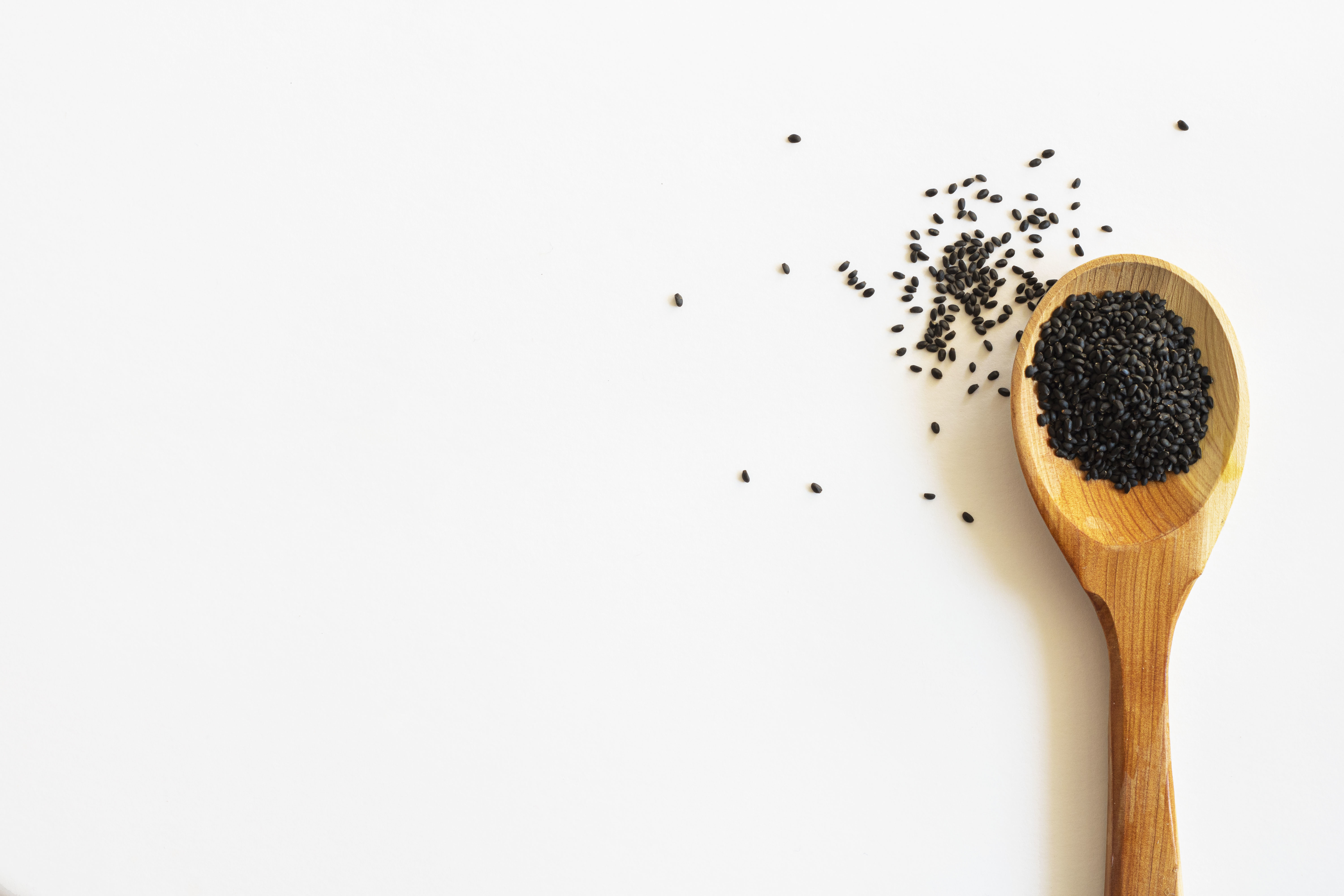Move over chia and flax, there’s a new seed in town.

8 to know about the new #TRENDING seed: basil seeds
Trend alert: basil seeds are now a thing. The superfood du jour is pretty similar to chia seeds but has some cool upsides, which is likely why the wellness community is wild about them (to the point that they temporarily went out of stock on Amazon in September 2019!).
Here at F-Factor, we want nothing more than for you to be informed and not influenced, so we did our due diligence deep dive into the new hot food. Here’s 8 things to know about the little seeds taking social media by storm; basil seeds.
(1) They’re seeds from a basil plant. Basil seeds, as the name suggests, are the seeds from a basil plant native to Southeast Asia; the Sweet Basil plant. Sweet basil, Ocimum basilicum, also known as Thai basil is different from the basil you might grow in your garden or expect to find paired with a tomato-mozzarella salad. It has a distinct aroma and flavor that some might describe as licorice-like. Its seeds, however, are relatively flavorless.
(2) Not that new. Basil seeds have taken the wellness community by storm over the past few months, but truth be told, this superfood has actually been around for a while. Basil seeds have a long history in Chinese and Ayurvedic medicine.
(3) Nutritional powerhouse. Basil seeds are rich in plant compounds including flavonoids and other polyphenols that have anti-inflammatory properties, are a good source of omega-3 fatty acids, and are prebiotic, so they can help repopulate the micro-biome. One 1 tablespoon (13g) serving of basil seeds is 60 calories and contains 7g carbs, 7g fiber, 2g protein, 2.5g fat, and 1,240 mg omega-3 fatty acids.
(4) Just like chia seeds. Basil seeds are similar in size to chia seeds, and also become gelatinous (and grow!) when submerged in water. Like chia seeds, these tiny seeds provide fiber and have a net carb we can get on board with–a serving of chia seeds contains just 1g net carb, and basil seeds have zero. A serving of both seeds is the same size (1 tablespoon) and contains 60 calories. Both seeds boast 2g protein per serving and have 0g sugar, and 0g sat fat.
(5) But also not. Where chia seeds can vary in color (grey, brown, black, and brown), basil seeds are completely black but turn almost a light blue when fully soaked in water. From a nutritional standpoint, basil seeds have the competitive edge; they have almost twice as much fiber, potassium, iron, and calcium as chia seeds, and 1g less fat too. Serving to serving, chia seeds overall have fewer carbs than basil seeds (5g per serving, compared to 7g) but with more fiber per serving, basil seeds actually have a lower net carb (0g, compared to 1g).
(6) Weight management wonder. In addition to having a stellar nutritional profile, basil seeds are believed by some to have appetite suppressing properties. This should come as no surprise as they pack a sizable amount of fiber into just one tablespoon and expand in size in water. This makes them extra filling as they take up additional space, for the same amount of calories, in our stomachs. And when we eat enough to be full, our stomach stretches, and the satiety hormone sends a signal to our brain that we are full. They’re also a zero net carb food, so they work to fill you up without taking up space in your glycogen stores. While they are calorically dense for their size (1 tablespoon is certainly not that large volume-wise), the amount of fiber (7g) for the number of calories (60 calories) is a pretty good deal. Just be mindful of how much you are using/consuming as anything with such a small serving size can add up quickly.
(7). Two words: SOAK THEM. The big thing with basil seeds is that you need to soak them (usually in water, but you can use almond milk or another liquid of your choice) before consuming. This is also what makes them so cool though, they don’t take long to absorb water and grow in size. Where chia seeds can take anywhere from 30 minutes to 2 hours to absorb water and swell in size, basil seeds take only 15-30 minutes to completely absorb water. And when they do absorb water, they still retain a bit of a crunchy interior.
(8) Easy to use. Basil seeds can be used similarly to chia seeds; sprinkle over salads, stir into nonfat Greek yogurt or use in baked goods, like 20/20 waffles, 20/20 pancakes, and 20/20 muffins—just be sure to soak them first. They soak up water much more rapidly than chia seeds, so they’re ideal for making chia (or basil, rather) seed puddings, and jellies/jams. Another great way to reap the benefits of them is to blend them into smoothies. Not only will it make your smoothie thicker, but more filling too.